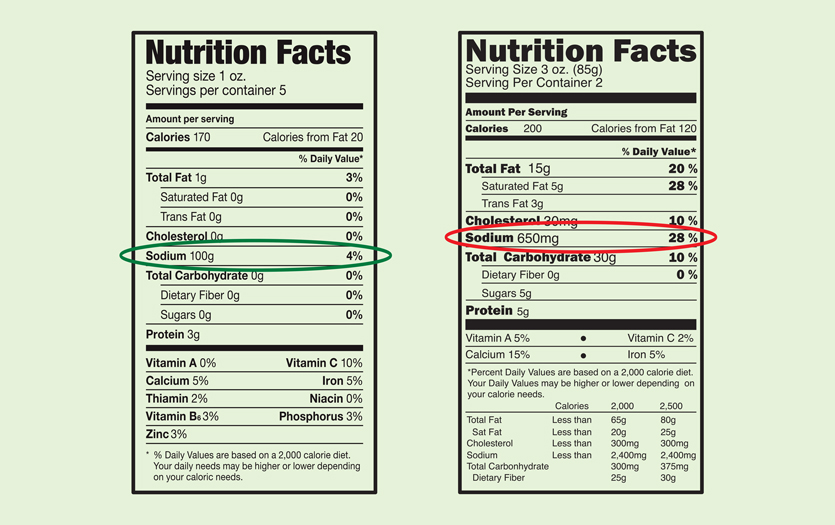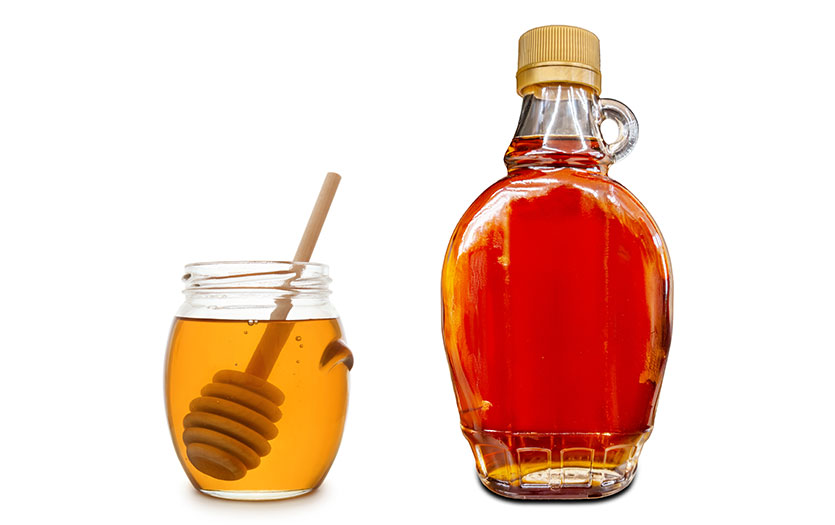
This post was written by Lexus Brittingham, RDN, LD, clinical dietitian, Parkview Health.
Did you know that it is recommended we eat no more than 2,300 milligrams of sodium a day? Yet, the American Heart Association reports that the average American eats over 3,400mg of sodium a day. That’s a pretty big discrepancy! That’s why most Americans could benefit from limiting their sodium intake.
Your doctor might even put you on a stricter sodium limit, depending on your medical conditions. For example, lowering sodium consumption is especially important for those with kidney or liver disease, high blood pressure or heart failure. This is because too much sodium in our bodies can cause us to retain fluid and increase our blood pressure, which can cause our heart and other organs to work harder, and lead to damage.
How to know the sodium content of food
Most of the sodium we eat comes from processed foods such as frozen meals, canned goods and deli meats. The nutrition facts label on processed foods can help you be informed about how much sodium is in a serving. A good place to start looking is at the percent daily value (%DV) of sodium. Any food with 5%DV or lower is considered low in sodium, and any food with 20%DV or higher is considered high in sodium.

When reading food labels, it’s also important to keep in mind the serving size of a food. The fronts of food packages often make claims about being “salt/sodium-free” or “low in sodium” but for that to be true, the item should have less than 140mg of sodium per serving. Additionally, foods that report “no salt added” or “unsalted” may not be sodium-free. Always refer to the nutrition facts label to get a true sense of the sodium content of the food.
Choose fresh foods to limit sodium
Eating more fresh foods can help us limit our daily sodium intake. When shopping, look for fresh meats and poultry versus processed ones. Examples of processed meats include bacon, sausage and hot dogs.
Fresh fruits and vegetables are a great low sodium choice, but you can also opt for frozen or canned depending on how they are packaged. Look for frozen fruits and veggies that don’t contain sauces or sodium-containing seasonings. Choose canned vegetables with no added salt, when possible. If you do buy canned vegetables with sodium, rinsing them off before eating can reduce the sodium content.
Additionally, try to avoid adding sodium to your foods when cooking or at the table. Just one teaspoon of salt contains 2,300mg of sodium. Try flavoring your foods in other ways such as with lemon juice, fresh herbs and spices, or a sodium-free seasoning like Mrs. Dash™. Look for reduced sodium options of your favorite condiments and sauces as well.
Reducing sodium while dining out
Just because you’re on a low-sodium diet doesn’t mean you can’t eat out. It just might take a little more planning. Many restaurants will list nutrition information online for customers to review prior to eating out. Try finding lower sodium menu items at your favorite restaurants before you go out. You can also request that your food to be prepared without salt and ask for any sauces to be served on the side. Reducing the portion size can also help you cut back on your sodium intake.
Resources



